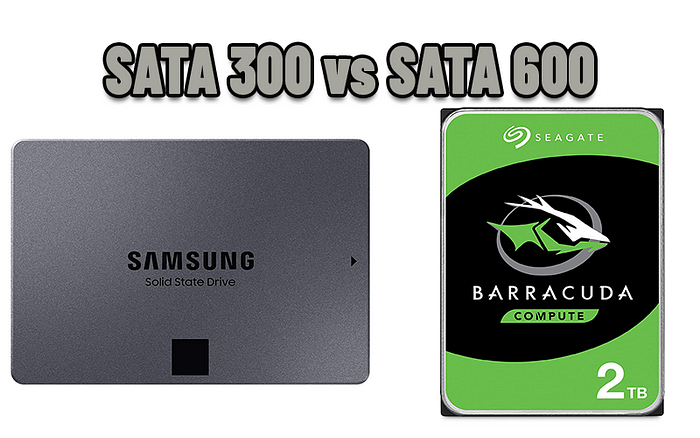SATA 300 vs SATA 600 — What is the Difference?
The choice of disk drives was always a fight between speed, cost, and size. The three options of hard disk drives, serial ATAs, and solid-state drives provide a fitting choice for any combination of those three traits. SATA drives specifically have become way more prevalent in recent times. Despite falling behind SSDs in terms of boot-up speed and even data retrieval speed these drives maintained a decent presence in the industry. The nomenclature of SATA is very straightforward with each new, big revision being labeled with a Roman numeral, one such example would be SATA-III, while the smaller revisions are usually kept under the same name as the one they stem from. As for a less professional but still widely used nomenclature, we have used Arabic numbers to represent the speed of SATA in its name. With that in mind, we will refer to the two drives in the following article as SATA 300 vs SATA 600.

Differences Between SATA 300 vs SATA 600
SATA 300
When you look into SATA one of the simple and cheap options is SATA 300 revisions. They are officially referred to as SATA-II but the other nomenclature is frequently used still. These are otherwise known as SATA 300 due to the speed they manage to reach after encoding protocols, which is 300 MB/s. When looked at from the list of features SATA 300 provides NCQ, native command queueing, as a good source of streamlining and further optimizing the execution of writing and reading of commands. The backward compatibility is a heavily appreciated aspect of this revision.
SATA 600
From its older revision SATA 600, widely referred to as SATA III, maintains a few important traits. These are NCQ and backward compatibility, although NCQ gets a bump. In terms of active improvement, the NCQ now has better management involved, which causes a lot better execution of provided commands. Another change to it was the isochronous NCQ command, this addition checks for changes in states of SATA-related queues more often. The more compact connectors allow easier slotting into the motherboard for the sake of convenience.
Conclusion
The look we had at SATA 300 and SATA 600 showcases a decent difference between the two. Especially when we take into account features offered on SATA 600, some of which we haven’t even covered due to their less prominent role in the overall device. As for more prominent ones they showcase a proper upgrade to this category, as SATA’s are supposed to, and a worthwhile revision to SATA 300. However, this does leave SATA 300 lacking in a few departments. The first one being speed itself, as we can see it’s just straight up slower than SATA 600. There are also those features SATA 600 boasts which are missing here. Of course, it has some strengths such as NCQ and backward compatibility but on a larger scale, SATA 300 is easily surpassed by the new revision. When purchasing new storage for your computer do go for SATA 600 but make sure you have a compatible device that’ll provide proper use of its strengths.